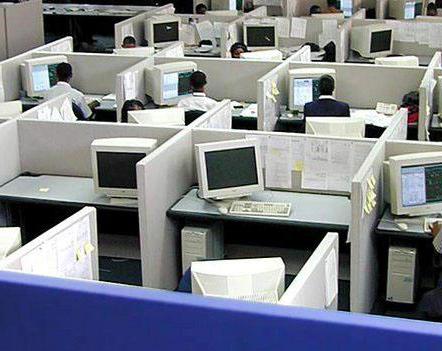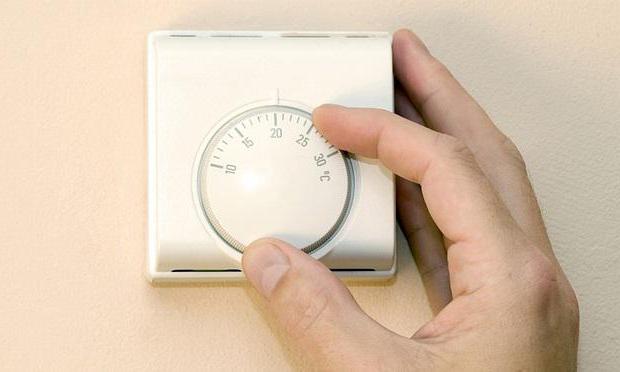Denis Valentinovich Manturov Minister of Industry and Trade of the Russian ...


The right of workers to work in conditions that meet the requirements of labor protection is established by Art. 219 of the Labor Code of the Russian Federation. Every employee has the right to workplace that meets the requirements of labor protection. The obligation to ensure safe working conditions is imposed by legislation on the employer. So, part 1 of Art. 212 of the Labor Code of the Russian Federation establishes that the employer is obliged to ensure the safety of workers in the implementation of technological processes, as well as the working conditions at each workplace that meet the labor protection requirements. According to Art. 11, 32 FZ of 30.03.1999 No. 52-FZ "On the sanitary and epidemiological well-being of the population", all individual entrepreneurs and legal entities are obliged to comply with the requirements of sanitary legislation, to carry out production control of compliance with sanitary rules when performing work, providing services, production, transportation, storage and product sales. In addition, in the Russian Federation there are numerous sanitary rules and other bylaws that establish regulatory requirements for labor protection. The problem is that many employers do not comply with labor protection requirements, try to circumvent them, or create the appearance of meeting them at minimal cost.
One of the factors affecting an employee in the course of work is the temperature regime. The increased air temperature in the workplace adversely affects the health of workers and can even threaten their lives if the standard indicators are significantly exceeded.
Regulatory requirements for the air temperature at workplaces are established by Sanitary Rules and Norms (SanPiN) 2.2.4.548-96 "Hygienic requirements for the microclimate of industrial premises" (approved by the decree of the State Sanitary and Epidemiological Supervision of the Russian Federation dated 01.10.1996 No. 21). These sanitary rules are aimed at preventing the adverse effects of the microclimate of workplaces and industrial premises on well-being, functional state, working capacity and human health. SanPiN 2.2.4.548-96 is mandatory for all enterprises and organizations and applies to the microclimate indicators at workplaces of all types of production facilities. At the same time, industrial premises should be understood as confined spaces in specially designed buildings and structures, where labor activity is carried out constantly (in shifts) or periodically (during the working day). This definition fits almost any premises where people work: from offices to production halls. Workplace - a section of the premises where labor activity is carried out during a work shift or part of it. A workplace can be several sections of a production facility or its entire area, depending on where the work is performed.
According to clause 1.4 of SanPiN 2.2.4.548-96, the heads of enterprises, organizations and institutions, regardless of the form of ownership and subordination, in order to ensure production control, are obliged to bring workplaces in line with the microclimate requirements provided for by these sanitary rules.
Obviously, the concept of the microclimate of industrial premises is broader than the concept temperature regime... An employee may feel hot and stuffy. But besides the air temperature, other factors also affect it. The microclimate in industrial premises, in addition to air temperature, is characterized by such indicators as surface temperature; relative humidity; air speed, intensity of thermal radiation. When the permissible values are exceeded, all these factors create a general feeling of discomfort in the employee, lead to a decrease in working capacity, and a deterioration in well-being.
SanPiN 2.2.4.548-96 establish optimal and permissible microclimate conditions. This takes into account the intensity of energy consumption of workers, the time of work and the period of the year.
All possible works in accordance with Appendix 1 to SanPiN 2.2.4.548-96 are divided into categories based on the intensity of the energy consumption of the human body, expressed in kcal / h (W).
Category Ia includes work with an energy consumption of up to 120 kcal / h (up to 139 W), performed while sitting and accompanied by insignificant physical stress (a number of professions in enterprises of precision instrument and mechanical engineering, in watchmaking, garment production, in management, etc. .).
Category Ib includes work with an energy consumption of 121 - 150 kcal / h (140 - 174 W), performed while sitting, standing, or associated with walking and accompanied by some physical stress (a number of professions in the printing industry, at communications enterprises, controllers, craftsmen in different types production, etc.).
Category IIa includes work with an energy consumption of 151 - 200 kcal / h (175 - 232 W), associated with constant walking, moving small (up to 1 kg) products or objects in a standing or sitting position and requiring a certain physical stress (a number of professions in mechanical assembly workshops of machine-building enterprises, in spinning and weaving production, etc.).
Category IIb includes work with an energy consumption of 201 - 250 kcal / h (233 - 290 W), associated with walking, moving and carrying weights up to 10 kg, accompanied by moderate physical stress (a number of professions in mechanized foundries, rolling, forging, thermal, welding shops machine-building and metallurgical enterprises, etc.).
Category III includes work with an energy consumption of more than 250 kcal / h (more than 290 W), associated with the constant movement, movement and carrying of significant (over 10 kg) weights and requiring great physical effort (a number of professions in forging workshops with hand forging, foundries with manual filling and pouring of flasks at machine-building and metallurgical enterprises, etc.).
Cold and warm periods of the year, according to p. 3.3, 3.4 SanPiN 2.2.4.548-96, are characterized by an average daily outside air temperature equal to +10 and below (cold period) and above +10 (warm period).
Optimal microclimate conditions are established according to the criteria of the optimal thermal and functional state of a person and provide a general and local sensation of thermal comfort during an 8-hour work shift with minimal stress on the mechanisms of human thermoregulation, do not cause deviations in the state of health, and create the prerequisites for high performance. Such microclimate conditions are naturally the most preferable in workplaces. It is this microclimate that exists in the workplaces of top managers and senior managers.
For the warm season, SanPiN 2.2.4.548-96 sets the following optimal air temperature indicators, depending on the category of work by the level of energy consumption:
Iа - 23 - 25
Ib - 22 - 24
IIa - 20 - 22
IIb - 19 - 21
III - 18 - 20
When, due to technological requirements, for technical and economically justified reasons, optimal working conditions cannot be provided, SanPiN 2.2.4.548-96 establish permissible microclimate conditions. The permissible microclimatic conditions are established according to the criteria of the permissible thermal and functional state of a person for the period of an 8-hour work shift. Acceptable microclimate conditions do not cause damage or impairment of health, but can lead to general and local sensations of thermal discomfort, tension in thermoregulatory mechanisms, deterioration of well-being and decreased performance.
For the warm season, depending on the category of work, the following permissible air temperature values are set in the range above the optimal values:
Ia - 25.1 - 28
Ib - 24.1 - 28
IIa - 22.1 - 27
IIb - 21.1 - 27
III - 20.1 - 26
If these indicators of air temperature at the workplace in the warm season are exceeded, there is a fact of inconsistency of working conditions with labor protection requirements and, consequently, violation of labor protection requirements by the employer.
In some industries, there are certain types of industries where it is impossible to establish permissible microclimate conditions due to technological requirements for the production process or economically justified inexpediency (for example, metallurgical, pulp and paper production, etc.). Obviously, it is impossible to hang air conditioners on a blast furnace in order to achieve acceptable air temperatures. The microclimate in such industries will always be unfavorable. In such industrial premises, working conditions should be considered as harmful and dangerous. In order to prevent the adverse effects of the microclimate on employees, the employer, in accordance with clause 6.10 of SanPiN 2.2.4.548-96, is obliged to use protective measures, such as: the use of local air conditioning systems; air spraying; compensation for the adverse effects of increased air temperature by changing other parameters of the microclimate; issuance of appropriate overalls and other personal protective equipment to employees; changes in the regulation of working hours, including the establishment of breaks in work, a reduction in the working day, an increase in the duration of vacation, etc.
Appendix 3 to SanPiN 2.2.4.548-96 sets limits on the time spent by workers at workplaces in the event of a deviation of the air temperature from the permissible standard indicators, depending on the category of work. So, at an air temperature of 32.5 and work categories Ia, Ib, workers can stay at the workplace for no more than 1 hour (continuously or in total per work shift); workers whose work belongs to categories IIa, IIb can be at the workplace for 1 hour at an air temperature of 31.5; and on jobs of category III, workers can work no more than 1 hour at an air temperature of 30.5. Therefore, when exceeding specified values air temperature to work even for the shortest time is at least unsafe, work in such conditions is generally not provided for by sanitary rules. Unfortunately, this Appendix is advisory in nature and does not oblige employers to strictly follow it. Nevertheless, his recommendations are fully justified, and if the employer, who does not provide acceptable microclimate conditions in the workplace, does not want to follow the recommendations, then he must take other measures to protect workers from adverse effects. high temperature air and other microclimate factors. The employer can increase the duration of the lunch break to two hours (Article 128 of the Labor Code of the Russian Federation), because in the overwhelming majority of organizations it is one hour; introduce additional breaks at their enterprises and organizations; shorten the working day. According to Part 1 of Art. 109 of the Labor Code of the Russian Federation for certain types of work provides for the provision of special breaks to employees during working hours, due to the technology and organization of production and labor. The types of these works, the duration and procedure for granting such breaks are established by the internal labor regulations. The employer, taking into account the opinion of the trade union body, can introduce appropriate provisions into these rules and establish additional breaks. Also, no one prevents employers from taking measurements of the air temperature at workplaces and issuing an order to reduce the working day on the basis of SanPiN 2.2.4.548-96. Thus, there are still opportunities to protect workers from the adverse effects of heat.
It should be noted that for violation of the legislation in the field of ensuring the sanitary and epidemiological well-being of the population, expressed in violation of the current sanitary rules and hygienic standards, failure to comply with sanitary and hygienic and anti-epidemic measures, administrative responsibility is provided (Article 6.3 of the Administrative Code of the Russian Federation). This offense entails a warning or the imposition of an administrative fine on citizens in the amount of 100 to 500 rubles; for officials - from 500 to 1000 rubles; on persons carrying out entrepreneurial activity without forming a legal entity - from 500 to 1000 rubles. or administrative suspension of activities for up to 90 days; on legal entities- from 10,000 to 20,000 rubles. or administrative suspension of activities for up to 90 days.
Eliminating the adverse effect on workers of increased air temperature, creating permissible (especially optimal) conditions for the microclimate of industrial premises is not cheap, it requires significant financial costs from the employer. For this reason, many employers neglect sanitary rules and do not create proper working conditions (and some do it simply because they do not care about employees). And the workers themselves often contribute to the occurrence of such situations, being afraid to tell the management about the unbearable conditions at the workplace, about violations of labor protection rules. (Apparently, this is how the majority of Russian workers work: first we lose health, earning money, and then we already lose money, trying to restore health ...)
However, if the employer does not provide acceptable microclimate conditions, employees have many opportunities to influence such an unscrupulous employer and protect their right to work in a healthy and safe environment.
Article 45 of the Constitution of the Russian Federation reads: "Everyone has the right to defend their rights and freedoms in all ways that are not prohibited by law." An employee has the right to protect his labor rights, freedoms and legal interests in all ways not prohibited by law (part 1 of article 21 of the Labor Code of the Russian Federation). This method is directly provided for by labor legislation - it is the employee's self-defense of labor rights.
In accordance with Art. 379 of the Labor Code of the Russian Federation for the purpose of self-protection of labor rights, an employee, notifying writing the employer or his immediate supervisor or other representative of the employer may refuse to perform work that directly threatens his life and health, with the exception of cases provided for by the Labor Code of the Russian Federation and other federal laws... (For example, according to Article 4 of the Labor Code of the Russian Federation, an employee will not be able to refuse work performed in emergency conditions, that is, in the event of a disaster or threat of disaster - fires, floods, hunger, earthquakes, epidemics or epizootics, and in other cases threat to life or normal living conditions of the entire population or its part.) In addition, Part 1 of Art. 219 of the Labor Code of the Russian Federation expressly provides for the right of an employee to refuse to perform work if there is a danger to his life and health due to violation of labor protection requirements (except for cases provided for by federal laws), until such a hazard is eliminated. At the time of refusal from such work, the employee retains all the rights provided for by labor legislation and other acts containing labor law norms. And the employer or his representatives do not have the right to prevent employees from exercising self-protection of labor rights (Article 180 of the Labor Code of the Russian Federation).
If the employee refuses to perform work in the event of a danger to his life and health, the employer is obliged to provide him with another job for the duration of the elimination of the hazard (part 4 of article 220 of the Labor Code of the Russian Federation). If the provision of another job is not possible, the employer, in accordance with Part 1 of Art. 57 of the Labor Code of the Russian Federation, is obliged to pay the employee the downtime arising in connection with the lawful refusal to perform work, in the amount of at least 2/3 of the employee's average earnings. This is due to the fact that in accordance with Part 1 of Art. 212 of the Labor Code of the Russian Federation, obligations to ensure safe conditions and labor protection are imposed on the employer, and downtime caused by the failure to fulfill these obligations is considered as downtime due to his fault.
To compel the employer to provide acceptable temperature conditions at workplaces, employees can use the following algorithm of actions. ( The greatest effect These actions will bring in the event that all workers working in unfavorable conditions, or most of them, stand up to defend their rights - collective action is always more effective.)
First of all, workers need to jointly measure the air temperature in their workplaces. To do this, you can use a regular household thermometer. In order to avoid errors (if the thermometer is of poor quality or faulty), several different thermometers can be used.
The obtained air temperature values are compared with the requirements of SanPiN 2.2.4.548-96. If the air temperature exceeds the permissible standard indicators, then the working conditions pose a threat to the health and life of workers, and they have the right to refuse to work until the employer eliminates this hazard.
Further, the obtained air temperature values must be recorded by drawing up an appropriate act. The act must be drawn up in duplicate, signed by at least three employees, but it will be better if it is signed by all employees who observed the temperature measurement. The content of the act, see Appendix 1.
One copy of the act must be handed over to the immediate supervisor or another representative of the employer and require him to sign on the second copy, which remains with the employees, as well as the date and time of acceptance of the copy of the act. If the employer's representative refuses to accept the act or make a mark of acceptance, you can deliver the act to him in the presence of at least two (or better, as many as possible) witnesses. In such a situation, it is not bad to record the moment of delivery of a copy of the act on video, if this is not prohibited by the rules established in the organization.
Then each of the employees, in accordance with the requirements of Art. 379 of the Labor Code of the Russian Federation, must notify the employer of his refusal to work. This can be done by issuing an appropriate notification (see Appendix 2).
The notification is drawn up by each employee in two copies, one of which, with a copy of the Act attached to it, is handed to the employer's representative, and the second, with a note of the employer's representative on receipt, remains with the employee.
During the period of refusal to work, the employee may be absent from the workplace. After the employer informs about the elimination of the danger to the health of the employee, the latter is obliged to start work again.
Annex 1
Date, place of drawing up the act (it is enough to indicate the name of the city where the organization is located)
We, the undersigned _______________ (the names of the employees are listed), drew up this Act stating that _______________2011 at ___ h. ___ min. (date and time of temperature measurement) at the workplace ______________________________
(the workplace is concretized by indicating its location - organization, workshop, site, premises - and the name of the position of the employee who works on it) the air temperature was ____ o C.
____________ / _____________ / "___" ____________2011
____________ / _____________ / "___" ____________2011
(signatures of employees with a decrypted signature and date)
Appendix 2
To the head of the shop (department, site, etc.) _______________________
from _______________________ (full name, position of the employee)
I hereby notify you that the air temperature at my workplace exceeds the permissible values established by SanPiN 2.2.4.548-96, approved. Resolution of the State Sanitary and Epidemiological Supervision of the Russian Federation dated 01.10.1996 No. 21.
In this regard, guided by Art. 21, 219, 220, 379 of the Labor Code of the Russian Federation, I refuse to perform work in conditions that threaten my health until this danger is eliminated. Ready to start work again after receiving written notification of the elimination of the hazard.
According to Art. 157, 212 of the Labor Code of the Russian Federation, the downtime that arose in connection with my refusal to perform work due to the employer's failure to comply with labor protection requirements, please pay at least 2/3 of my average earnings.
Appendix: a copy of the Act dated _________2011
"___" __________2011 ________ / _________ / (date, signature with decryption)
19.07.2010Labor Code Russian Federation obliges the employer to ensure the safety and working conditions that meet the state regulatory requirements for labor protection
1. Articles 209 and 212 of the Labor Code of the Russian Federation establish that one of the duties of an employer is to carry out sanitary household, sanitary-hygienic, preventive treatment, rehabilitation and other measures in accordance with the requirements of labor protection. Currently, among the sanitary requirements for the working conditions of workers, the requirements for the temperature regime and humidity of industrial premises, which are established by SanPiN 2.2.4.548962 (hereinafter - SanPiN), stand out.
High air temperature is one of the factors that affects the decrease in performance. From the text of SanPiN it follows that in the summer, the air temperature in the room should not exceed 25 ° C, and its relative humidity should be less than 40%. Such values provide a feeling of thermal comfort during an 8-hour working day (shift), do not cause deviations in the health status of employees, and also create the prerequisites for a high level of their performance and are preferred at workplaces.
Since the employer needs to ensure optimal microclimate conditions in industrial premises, they must be equipped with heating, ventilation and air conditioning systems. The absence of an air conditioner, fan or their faulty condition will lead to an increase in temperature in the workplaces of employees. In other words, non-compliance with the established requirements will lead to a violation of the law and pose a threat to the health of employees.
Office workers are included in category a. If the air temperature at the workplace is 30 ° С, then the duration of their working day cannot exceed 5 hours, 31 ° С - 3 hours, 32 ° С - 2 hours, and 32.5 ° С - 1 hour.The basis for reducing the working time is the microclimate indicators, which are determined in the manner prescribed by section 7 of SanPiN. The employer needs to create a commission that will measure the temperature in the workplace. Based on the results of the examinations, a protocol is drawn up. In it, the commission reflects the measurements obtained and evaluates them for compliance with regulatory requirements.
If the temperature exceeds the permissible values, the employer must reduce the working hours of employees in accordance with the requirements of SanPiN. To do this, he needs to issue an order (with reference to the protocol on measuring the air temperature at workplaces).
Lawyer's comment:
SanPiN 2.2.4.54896 "Hygienic requirements for the microclimate of industrial premises" states that in order to protect workers from possible overheating or cooling, when the air temperature in the workplace is higher or lower than the permissible values, the time spent at workplaces (continuously or in total for a working shift) should be limited.
The specified SanPiN, of course, refers to the state regulatory requirements for labor protection and primarily solves labor protection issues. It talks about limiting the time spent by workers in the workplace when the maximum permissible temperatures are exceeded on a working day (shift). However, the term “stay time” is not identical to the term “working hours”.
This SanPiN establishes for the employer the obligation to modify the mode of work and rest of work, as required by article 212 of the Labor Code of the Russian Federation, so that the time spent at a workplace with unfavorable production factors meets hygienic requirements. It seems that this duty can be fulfilled in various ways (letting employees go home earlier, introducing additional breaks, equipping a rest room, moving them to another workplace, etc.).
If the employer does not fulfill this obligation, he simultaneously commits two offenses:
- violation of sanitary rules, since workplaces do not comply with these rules in terms of temperature indicators;
- violation of labor legislation, namely labor protection standards, since employees work in unfavorable conditions.This means that if the employer does not limit the time spent at the workplace when elevated temperatures does not provide the employee with another job, it turns out that the time spent at the workplace6 becomes equal to the duration of the daily work / shift7.
Consequently, in this case, indeed, overtime hours arise for employees, since they work on the initiative of the employer outside the established working hours for them.
Thus, employees can be advised to submit complaints both to the bodies of the Federal Service for Supervision of Consumer Rights Protection and Human Welfare (Rospotrebnadzor) and to labor inspections. The fine established by the Code of Administrative Offenses of the Russian Federation for legal entities for violations of sanitary rules is comparable to the costs of purchasing and installing air conditioners and fans.
POPULAR NEWS
 Money for the report does not have to be issued from the cash desk
Money for the report does not have to be issued from the cash desk
Accountable amounts, incl. for the purchase of gasoline, you can give the employee not only in cash, but also transfer by bank transfer to his "salary" card.
 Tell the tax authorities which address to send the tax notice to
Tell the tax authorities which address to send the tax notice to
In September, the distribution of paper notices for the payment of personal taxes will begin. If a citizen does not live at the place of registration, such a notification may be lost. To prevent this from happening, it is better to inform the inspection in advance of your current address for correspondence.
 The form of the invoice has changed
The form of the invoice has changed
So, in the invoice there was a new column 1a "Product type code". It is intended for exporters who sell goods to the EAEU countries.
 How long do you need to store the "primary"
How long do you need to store the "primary"
Primary accounting documents required for calculating and paying taxes must be kept for at least four years. The Ministry of Finance has explained from what moment to count this period.
 In autumn there will be more reasons for exclusion from the Unified State Register of Legal Entities
In autumn there will be more reasons for exclusion from the Unified State Register of Legal Entities
On September 1, amendments to the law on state registration of legal entities and individual entrepreneurs come into force. From this date, if there is inaccurate information about the company in the Unified State Register of Legal Entities, the tax authorities will forcibly exclude this company from the register.
 Property tax benefits for individuals: what you need to know
Property tax benefits for individuals: what you need to know
Actual on: September 5, 2016
From January 1, 2017, all employers and employees will have to comply with the new Sanitary and Epidemiological Requirements for Physical Factors in the Workplace (approved by the Decree of the Chief State Sanitary Doctor of the Russian Federation of June 21, 2016 N 81). The updated sanitary and epidemiological rules and regulations (SanPiNah) define the standards for the impact of such physical factors as:
Standards are the maximum permissible levels of factors. Their impact within the established limits on an employee who works 8 hours a day (no more than 40 hours a week) should not lead to diseases or deviations in his state of health (clause 1.4 of SanPiN 2.2.4.3359-16).
In connection with the introduction of new rules, some of the previously approved SanPiNs will no longer be valid since 2017. For example, SanPiN 2.2.4.1191-03 " Electromagnetic fields in a production environment "(clause 2 of the Resolution of the Chief State Sanitary Doctor of the Russian Federation of June 21, 2016 N 81).
The most pressing question for both employers and employees is what should be the temperature at the workplace according to SanPiN 2016.
SanPiN establishes the optimal temperature values at the workplace among the indicators of the microclimate. These include (clause 2.2.1 SanPiN 2.2.4.3359-16):
The standards of values for these indicators are determined separately for the warm and cold seasons. Cold is the time when the average daily outdoor temperature is +10 ° C and below. If the temperature outside the window is higher, then this is the warm season (p. 2.1.5 SanPiN 2.2.4.3359-16). That is, the temperature regime at the workplace according to SanPiN in summer and winter may differ, but not much. Indeed, at any time of the year, a person needs a heat balance with environment(p. 2.1.1 SanPiN 2.2.4.3359-16).
In addition, different temperature conditions are provided for workers employed in different types work - depending on the energy consumption of employees. So, for example, garment workers, like most office workers, are among those who spend the least energy during the working day - up to 139 watts. They perform work of category Ia (Appendix 1 to SanPiN 2.2.4.3359-16). The following indicators of the microclimate have been established for them (clause 2.2.5 of SanPiN 2.2.4.3359-16):
And violation of specifically sanitary rules and hygienic standards entails a fine (Article 6.3 of the Administrative Code of the Russian Federation):
Either the suspension of the activity of an individual entrepreneur or a legal entity for up to 90 days.
What external factors affect employee performance? A similar question, of course, should be asked by any manager seeking to take care of their subordinates and increase monthly revenue. Unfortunately, features that are obvious at first glance often go unnoticed. So, for example, in enterprises, both small and large, temperature standards at the workplace are often ignored. At the same time, it is necessary to take into account the fact that not every employee will be able to work fully, freezing or suffering from the unbearable heat.
Are there official documents regulating such indicators? Yes, there are. These are the SanPin standards for temperature at the workplace. The regulations given in them apply to absolutely all companies and all employees (regardless of the size of the company and its nationality).
All information in the standards can be divided into two main blocks: temperature recommendations for various categories of employees and the employer's responsibility for their violation. Among other things, the air temperature at the workplace is regulated by Article 212 of the Labor Code of our country, which states that the employer is obliged to provide favorable conditions and regime for work, as well as rest of his employees.
What can an employee do if the temperature at the workplace is above normal? If a person realizes the real risks to his health in such a situation, then it is quite possible to temporarily refuse to fulfill his job responsibilities... To do this, it is necessary to draw up a formal written statement and pass it on to the higher management. 
The document must contain information that the performance of the work stipulated by the concluded labor contract threatens health with certain risks. It will not be superfluous to refer to the 379th article of the Labor Code, which contains information about the legality of such intentions. If the paper is drawn up in accordance with all the rules, then the employee will not only not lose, but will also retain all existing rights. However, do not overdo it in your desire to take a break from work, it is likely that your boss will offer you alternative options.
The management also has its own loopholes and detours. The thing is that SanPin in its documentation indicates such a concept as "time of stay", and not "length of the working day." Simply put, the employer is not always obliged to let the employee go home early when they are uncomfortable in order to comply with the law. He can take the following measures:

Of course, office workers are most worried about temperature standards in the workplace, but it is difficult to say with what this trend is connected. It should be noted that managers, secretaries and other intellectual workers belong to the category of workers with little physical exertion. It is generally accepted that their normal temperature should range from 22.2 to 26.4 (20-28) degrees Celsius. Any deviation from the established figures should lead to a reduction in the working day. The reduction scheme looks like this:
According to a similar algorithm, the term for performing work duties in the office is reduced to a temperature of 32.5 degrees above zero. With such initial data, it is allowed to work no more than one hour. With the above work, it is completely required to cancel or move to another room. 
It should be noted that employees in the workplace can suffer not only from stuffiness and heat, but also from cold (such situations are even more dangerous, but they are much less common). What is the minimum allowable temperature in the workplace? To begin with, let's discuss the algorithm of the day in cool conditions for office workers. The number of working hours for them begins to decrease from 20 degrees according to the following scheme:
The final mark of 13 degrees Celsius implies the work of an office employee in an unheated room for one hour; with lower performance indicators, it is necessary to cancel it altogether.
It should be noted that the above norms apply exclusively to production and office premises, for social facilities the requirements also exist, but differ slightly. For example, the recommended temperature for clinics is about 20-22 degrees. 
SanPin standards for temperature at the workplace differ for each category of employees. In total, there are three main categories, of which two are also subdivided into additional subgroups:
It should not be assumed that the higher the category of the employee, the more scrupulous the temperature standards should be observed at the workplace in summer and winter. In fact, the law requires everyone to be protected very carefully. Moreover, people involved in active physical labor, it is much easier to endure the coolness, since they have the opportunity to keep warm from the efforts being made. ![]()
What to do if the temperature standards in the workplace are violated, and the management continues to force employees to work? In this situation, the time that goes beyond the limits given in the laws can be considered processing. And processing, as you know, should be paid in double the amount.
Where can you complain that temperature standards at the workplace are occasionally or regularly violated? Unfortunately, there is no institution officially dealing with this issue. However, if necessary, employees can direct all their complaints regarding the unsatisfactory organization of conditions at the workplace to the local labor inspectorate, which will be able to record the complaint and initiate proceedings on it.
In addition to your wishes for organizing a comfortable temperature at the workplace in your company, it is possible to send to Rospotrebnadzor, they will also help you resolve a disputable situation with the employer.
What punishment can an unlucky employer face? The simplest is the usual fine, the amount of which can range from 10 to 20 thousand rubles. Much worse for any organization is the temporary suspension of its activities, which can last up to 90 days. To avoid punishment, it is necessary either to improve the existing conditions, or the employee to the required norm in this case. 
How can you reach the required temperature at the workplace in summer? Perhaps the only one effective way the solution to this issue is the installation of modern air conditioners, as well as maintaining the current ventilation system at a high level. No open windows and drafts will help create comfortable conditions in the heat, but will only ensure the distillation of heated air from room to room. Another disadvantage of this method is the high risk of colds among those in the room.
With regard to the need to increase the air temperature, the most appropriate is the use of a central heating system.